36+ Dairy Free Snacks for Babies
- April 5, 2024
- Last Updated: February 16, 2025
- 0 Comments
- Baby Led Weaning
Sometimes babies have food sensitivities and allergies that require removing dairy, forcing you to get creative with snacks. While some foods are easy to avoid, others are common ingredients that can be difficult to avoid. We’ve rounded up some of our favorite dairy free snacks for babies to help lighten your load.

As an Amazon Associate, I may earn from qualifying purchases. You can read more here on our Disclaimer and Privacy Page.
Disclaimer – This post is for informational purposes only and is not for diagnosing or treatment. See your medical provider or Registered Dietitian for individual recommendations.
While the first 6 months of a baby’s life is usually exclusively breastmilk or formula, you may notice that your little one becomes fussy, doesn’t tolerate, or has reactions after eating.
You may suspect your little one has a food allergy or dairy intolerance, forcing you to remove dairy from your diet as a breastfeeding mom.
Or, baby may be fine with formula and breastmilk while you eat dairy products, but once you introduce solids and dairy to baby, the symptoms start.
While the CDC doesn’t recommend offering cows’ milk to your baby until 12 months, dairy includes much more than milk.
Dairy sensitivity can cause irritability or fussiness, digestion troubles, skin issues, respiratory reactions, and in more severe cases, failure to gain weight.
While it’s always important to check with your baby’s doctor first, dairy may be the culprit for some of these issues.
And while there are many nutritious dairy-free options for babies, you can also modify many snack ideas for babies to remove dairy.
Fortunately, your baby’s diet can be modified to receive the nutrients in dairy foods still, while following a dairy free diet for baby. Whether your baby has a cow’s milk protein allergy or lactose intolerance, there are many dairy-free alternatives you can try.
We have several dairy-free recipes for babies that you can depend on, that have been vetted by Registered Dietitians.
Today’s post will give you a rundown on the different types of dairy sensitivities and provide you with dairy-free snacks for babies.
What are Dairy Foods?
Dairy foods are any foods made with cow’s milk, but isn’t just limited to milk as a beverage.
They include:
- Milk
- Cheese
- Yogurt
- Cottage Cheese
- Kefir
- Ice cream
- Butter
- Cream cheese
- Sour cream
- Buttermilk
- Whipping cream
- Half and half
- Sweetened condensed milk
- Evaporated milk
- Whey protein

Dairy foods are known for providing protein, fat (depending on the type of dairy/fat chosen), calcium, potassium, B-Vitamins, and possibly probiotics and Vitamin D.
So, dairy products can provide a plethora of important nutrients, so ensuring babies can receive them through dairy-free products is important (and they can!).
What is a Dairy Sensitivity?
Simply put, a dairy sensitivity is a reaction to dairy products. It can be either a milk protein allergy or lactose intolerance.
So, what’s the difference?
Cow’s Milk Protein Allergy (CMPA)
If your baby has a cow’s milk protein allergy or CMPA, they have an immune response to the protein found in dairy.
The proteins in cow’s milk include casein and whey. In some people, these proteins are unrecognized by the body.
Instead, the immune system classifies those proteins as harmful and will launch an immune attack. That’s where the allergy symptoms come in.

Allergy symptoms often present as eczema or rashes, vomiting, bellyaches, diarrhea, and wheezing or breathing troubles.
Those who are severely allergic may be at risk for anaphylaxis, or a closing of the airways. This is very serious and requires immediate medical attention.
Preterm infants are at a higher risk for developing a cow’s milk allergy.
Treatment includes avoiding the allergen. Breastfeeding is considered the first choice for feeding options.
However, that doesn’t mean that dairy is completely off-limits to you as a breastfeeding mom.

One large review of the research revealed that the amount of cow’s milk protein that remains in breastmilk is quite low, but always check with your doctor as each mom is an individual.
The researchers found that in more than 99% of the baby’s with CMPA, there was insufficient allergens in the breastmilk to cause a reaction.
Lactose Intolerance
Lactose is the natural sugar in milk. Lactose intolerance refers to an inability to properly digest the lactose in milk.
Normally, the digestive system uses the enzyme lactase to break down the lactose into usable sugar for the body. That sugar then enters the bloodstream and is used as fuel for the body’s function.

In lactose intolerance, your body lacks that enzyme. As a result, the lactose is undigested and can wreak havoc in the gut.
Diarrhea, gas, cramping, and bloating are common lactose intolerance symptoms.
Because lactose intolerance develops over time, babies don’t often have lactose intolerance.
Dairy Ingredients to Look For
When your child has a food sensitivity, label reading is key, and you will become a pro at looking at every detail to avoid a possible reaction.
According to Go Dairy Free, some dairy ingredients to beware of include:
- Ammonium Caseinate
- Butter
- Buttermilk
- Buttermilk Powder
- Calcium Caseinate
- Casein
- Caseinate (in general)
- Cheese (All animal-based)
- Condensed Milk
- Cottage Cheese
- Cream
- Curds
- Delactosed Whey
- Demineralized Whey
- Dry Milk Powder
- Dry Milk Solids
- Evaporated Milk
- Ghee
- Goat Cheese
- Goat Milk
- Half & Half
- Hydrolyzed Casein
- Hydrolyzed Milk Protein
- Iron Caseinate
- Lactalbumin
- Lactoferrin
- Lactoglobulin
- Lactose
- Lactulose
- Low-Fat Milk
- Magnesium Caseinate
- Malted Milk
- Milk
- Milk Derivative
- Milk Fat
- Milk Powder
- Milk Protein
- Milk Solids
- Natural Butter Flavor
- Nonfat Milk
- Nougat
- Paneer
- Potassium Caseinate
- Recaldent
- Rennet Casein
- Sheep Milk
- Sheep Milk Cheese
- Skim Milk
- Sodium Caseinate
- Sour Cream
- Sour Milk Solids
- Sweetened Condensed Milk
- Sweet Whey
- Whey
- Whey Powder
- Whey Protein Concentrate
- Whey Protein Hydrolysate
- Whipped Cream
- Whipped Topping
- Whole Milk
- Yogurt
- Zinc Caseinate

Dairy Free Alternatives for Babies
Fortunately, many there are many dairy free products on the market, whether you need dairy free formula, dairy free snacks for babies, or dairy free meals.
In the last 5-10 years, the grocery store shelves have exploded with dairy free options.
You can find an alternative for almost any dairy product you can think of – here’s a great break down of the nutritional differences between dairy and alternative milks.
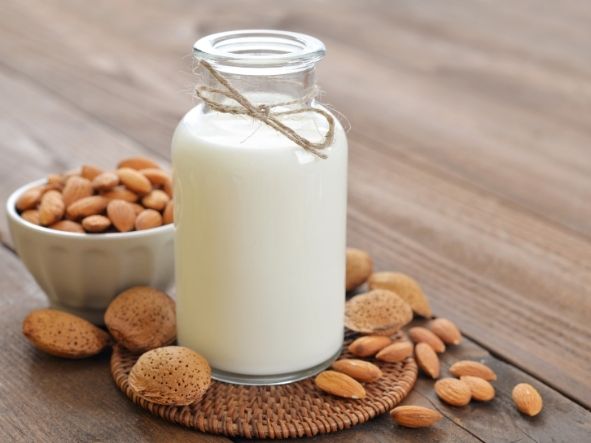
For example, canned coconut milk makes an excellent replacement in recipes that call for milk.
It’s creamy and high in fat, which is good for developing babies. Plus it’s shelf-stable.
Then there are other plant-based milks like:
- Soy milk
- Almond milk
- Oat milk
- Cashew milk
- Hemp milk
- Rice milk
- Flax milk

There are also nondairy yogurt alternatives, such as coconut or almond milk yogurt. We have some recommended non dairy yogurts for baby to still get the probiotic benefits.
In addition, dairy free cheese is an option for babies that can’t tolerate dairy cheese. You can also use nutritional yeast to give your dish a cheesy flavor without the dairy.
Lastly, as a dairy free butter alternative, you can use coconut oil, or vegetable oil spreads (although those often have whey or other dairy ingredients, so do a thorough investigation).
Will My Child Grow Out of a Dairy Sensitivity?
The good news is that most babies grow out of cow’s milk allergies as they get older.
To overcome dairy sensitivity, it is recommended to institute a gradual exposure to dairy foods.
This is something you should work through with your child’s pediatrician, a Registered Dietitian, andor an allergist.
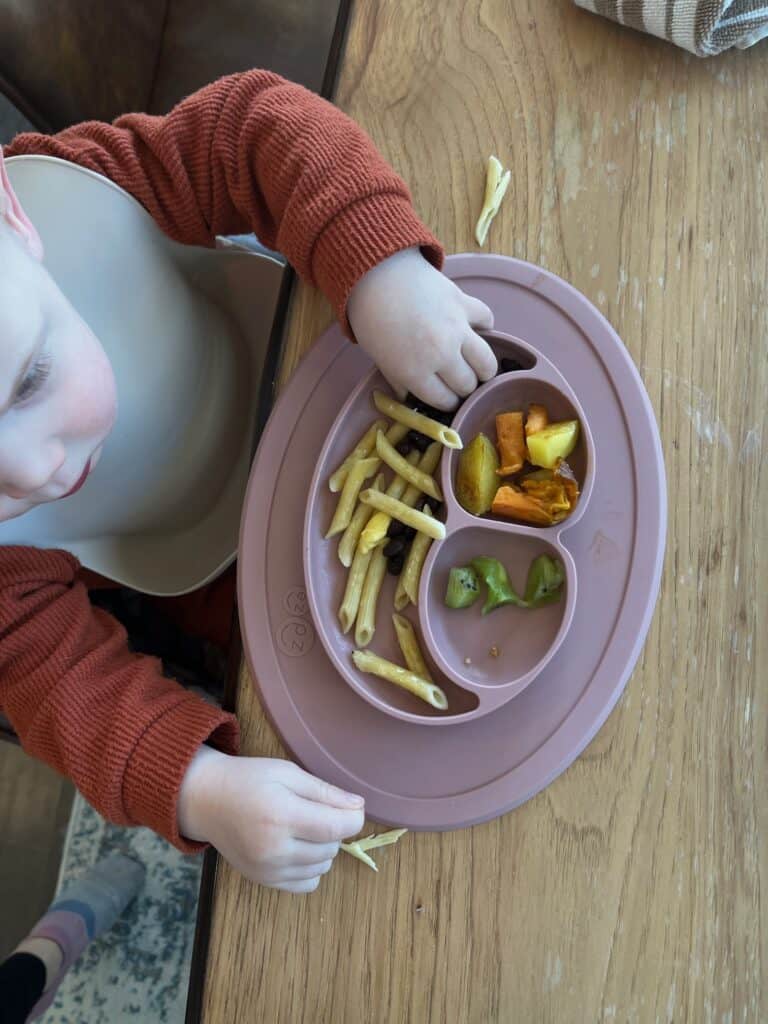
Prepackaged Dairy Free Snacks for Baby
It’s nice to have some prepackaged dairy free snacks on hand for when you’re on-the-go.
While it may not be easy to find things at the gas station or convenience store, you can have your diaper bag stocked.
Here are some ideas:
- Fruit or veggie pouches
- Puffs
- Hippeas Chickpea Puffs
- Smoothie Melts (made with coconut milk)
- Teethers
- Mum Mum Rice Rusks
- Animal Crackers
- Graham Crackers
- Applesauce
- Fresh fruit
- Rice cakes
Dairy Free Snacks for Babies
It’s also pretty easy to prep dairy free snacks at home, especially if you have core dairy free pantry staples on hand.

Here are some easy dairy free options for baby.
- Smoothies
- Edamame
- Eggs (eggs are great for baby. Make a version of baby led weaning egg muffins by omitting the cheese and using non-dairy milk).
- Avocado – Lots of fun ideas for avocado recipes for baby led weaning
- Beans, like black beans or kidney beans and lentils – So many ways to serve beans to toddlers, or check out these lentil recipes for babies and toddlers
- Peanut butter – It’s also a good idea to introduce peanut butter early, since it can be a common allergen —here are some peanut butter recipes for babies
- Meatballs for baby led weaning
- Oatmeal – Make with water or soy/almond/coconut milk
- Pureed meat – you can blend meat with a little broth or breastmilk to offer them meat with a different texture
- Chicken
- Zucchini
- Broccoli for Babies is a great source of non-dairy calcium!
- Potatoes and sweetpotatoes – There are so many ways to cook and serve sweetpotato for baby led weaning
I’ve also rounded up some dietitian-approved recipes that are dairy-free and great for baby. Some have modifications listed, such as “omit the cheese.”
Dairy Free Recipes for Babies
If your baby has a dairy allergy or intolerance, these dairy free recipes for babies can help you nourish your little one without the stress.
Baby French Toast Sticks are a healthy, tasty way to introduce eggs to your baby. This protein french toast can be topped with fruit, peanut butter, hummus, yogurt or milk!
This is the perfect snack for a teething baby—soothing, cool, and nutritious!
Baby oatmeal cookies are rich in fiber and nutrients and contain no added sugars. Oatmeal cookies are perfect as baby breakfast cookies or a healthy baby snack any time of day!
Acorn squash muffins are a delicious, kid-friendly snack that can be served any time of day.
This Beet Banana Smoothie is a healthy, antioxidant-packed smoothie option, great for after a workout, packed with banana, mango, raw beets and spinach. You won't even taste the spinach in this beet spinach smoothie. Be sure to skip the honey for baby.
Whole Wheat Sweetpotato Zucchini Muffins are a tasty, portable snack option for your little ones. These zucchini and sweetpotato muffins are full of veggies and provide a dairy-free option for those who need it
These air fryer bison burgers are flavorful, ready in minutes, and an easy way to make bison burgers. Top them with your favorite spreads and enjoy an easy dinner!
Air Fryer Parsnips are an easy and healthy side option, ready in just 20 minutes. Honey mustard parsnips combine honey, dijon mustard and a handful of spices for a healthy veggie side.
Carrot Oatmeal Raisin Bars are a delicious carrot cake bars recipe made with a raisin and date puree, shredded carrots, peanut butter and oats. They make for a family friendly snack any time of year!
For the best gluten free zucchini muffins, look no further than these zucchini almond flour muffins made with almond flour, oats, almond butter and spices. A delicious and satisfying snack for the whole family.
These oatmeal bites for baby are sweetener free, and a great way to offer protein, healthy fats, and micronutrients, like iron, to your little ones.
Make this easy banana bread with chia seeds for a tasty breakfast or on-the-go snack. Made with fruit, chia seeds, oat flour and half the sugar, it's a wholesome, healthy chia seed bread for all.
Pumpkin zucchini muffins are perfect for fall, and a healthy muffin recipe for babies, toddlers and adults! Who knew dairy free pumpkin muffins could taste so good!?
These homemade hemp seed bars are the perfect flavorful, on-the-go vegan and gluten-free snack. With no refined sugars, these bars are perfect for before or after a workout and a great family-friendly, kid-friendly snack!
Peanut Butter Banana Oatmeal cookies only require 3 pantry ingredients and are ready in under 20 minutes! Plus, these 3 ingredient vegan peanut butter cookies are the best as an easy, quick dessert.
Cherry Chocolate Chia Pudding is a great way to use those summer cherries. Great as a breakfast, snack or dessert, this chocolate cherry pudding recipe with cherries and chocolate is an easy vegan dessert.
These vegan peanut butter chia balls are the perfect, kid-friendly on the go snack! Full of flavor, fiber and a hint of sweetness, these peanut butter protein balls are nutritious, easy and delicious!
Banana chia pudding is like a healthy banana pudding in a glass, filled with nourishing ingredients like bananas, chia seeds, milk and shredded coconut.
This cantaloupe mango smoothie is great for kids. Make it in minutes with just 5 simple ingredients.
This Crispy Air Fryer Tempeh covered in a delicious tempeh peanut sauce is a 20 minute vegan air fryer recipe that everyone will love!
These crispy frozen green beans in the air fryer are ready in a flash, and make for a healthy veggie snack that tastes like green bean fries. Make them in under 15 minutes.
Use plant-based yogurt to whip up this deliciously creamy Strawberry Banana Smoothie Bowl recipe.
These easy nut free protein bars are a wholesome, on-the-go option. Chickpea protein bars offer a filling combination of protein and fiber and are great allergy free protein bars for those allergic to tree nuts, gluten or dairy. Plus, no protein powder is used!
This chickpeas for babies recipe is like a simplified hummus!
These Gluten Free Chocolate Zucchini Muffins are made with chickpea flour and naturally sweetened with bananas. Zucchini Banana Chocolate Chip muffins are great as baby muffins, toddler muffins, or a high protein muffin snack!
BBQ roasted chickpeas are the perfect crunchy snack, or easy to throw on salads, stir fries and more. Barbecue chickpeas are full of that barbecue flavor you know and love.
Homemade cantaloupe puree is paired with healthy fats and some protein for baby for an all-around, balanced snack or meal option.
Air Fryer Butternut Squash fries are flavorful and fun for kids! If you have picky eaters, roasting butternut squash in the air fryer is a great way to get a delicious and crispy texture!
This easy baby pancakes recipe is nutrient-full and great to serve for baby led weaning at 6 months and beyond!
These chicken meatballs for baby need only 5 ingredients, and are a healthy and fun way to introduce nutrients to your baby (and/or toddlers!).
Easy guacamole recipe that is surprisingly high in protein and fiber with the help of a secret ingredient - chickpeas! Great for baby-led weaning or a quick toddler snack.
These 3-ingredient banana oatmeal bars are a quick and healthy snack perfect for baby-led weaning.
With a couple of very minor modifications, this Mommy & Me Cashew Dip recipe works well for multiple ages and stages of development - babies, toddlers, school-agers, teenagers, and adults, alike.
Sweetened only with banana, these waffles keep within AAP guidelines to avoid added sugars in babies under the age of two, so if your little one has started solids and you’re looking for some baby-friendly finger food recipes ideas, check these out!
A baby waffle recipe for babies and toddlers full of nutrients and can be frozen for an easy breakfast or snack!
References:
- Burris AD, Burris J, Järvinen KM. Cow’s Milk Protein Allergy in Term and Preterm Infants: Clinical Manifestations, Immunologic Pathophysiology, and Management Strategies. Neoreviews. 2020;21(12):e795-e808. doi:10.1542/neo.21-12-e795
- Munblit D, Perkin MR, Palmer DJ, Allen KJ, Boyle RJ. Assessment of Evidence About Common Infant Symptoms and Cow’s Milk Allergy. JAMA Pediatr. 2020;174(6):599–608. doi:10.1001/jamapediatrics.2020.0153
- Trogen B, Jacobs S, Nowak-Wegrzyn A. Early Introduction of Allergenic Foods and the Prevention of Food Allergy. Nutrients. 2022;14(13):2565. Published 2022 Jun 21. doi:10.3390/nu14132565
Support Bucket List Tummy


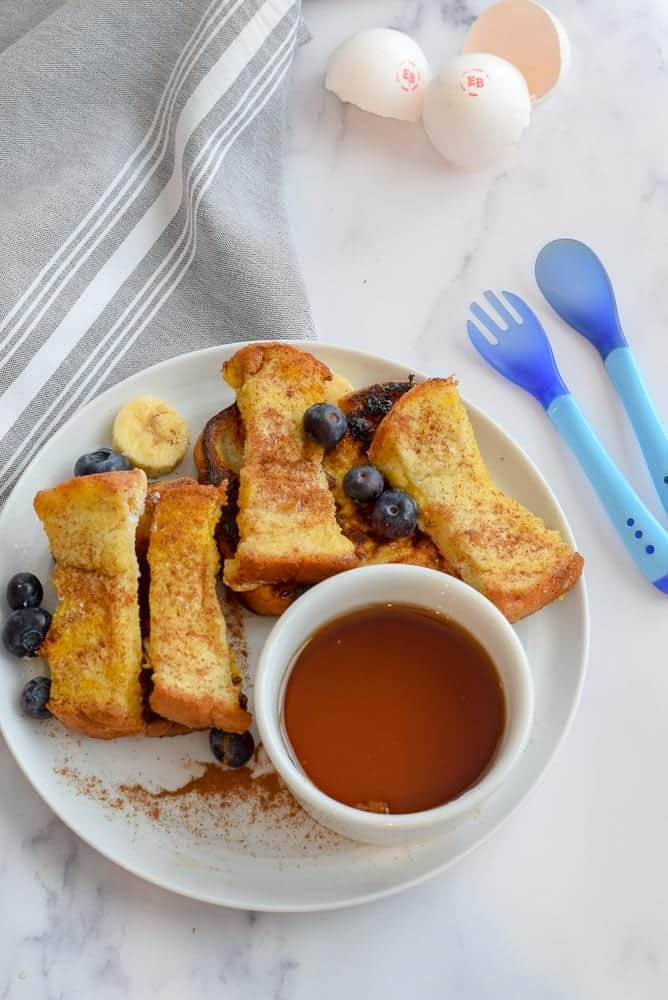


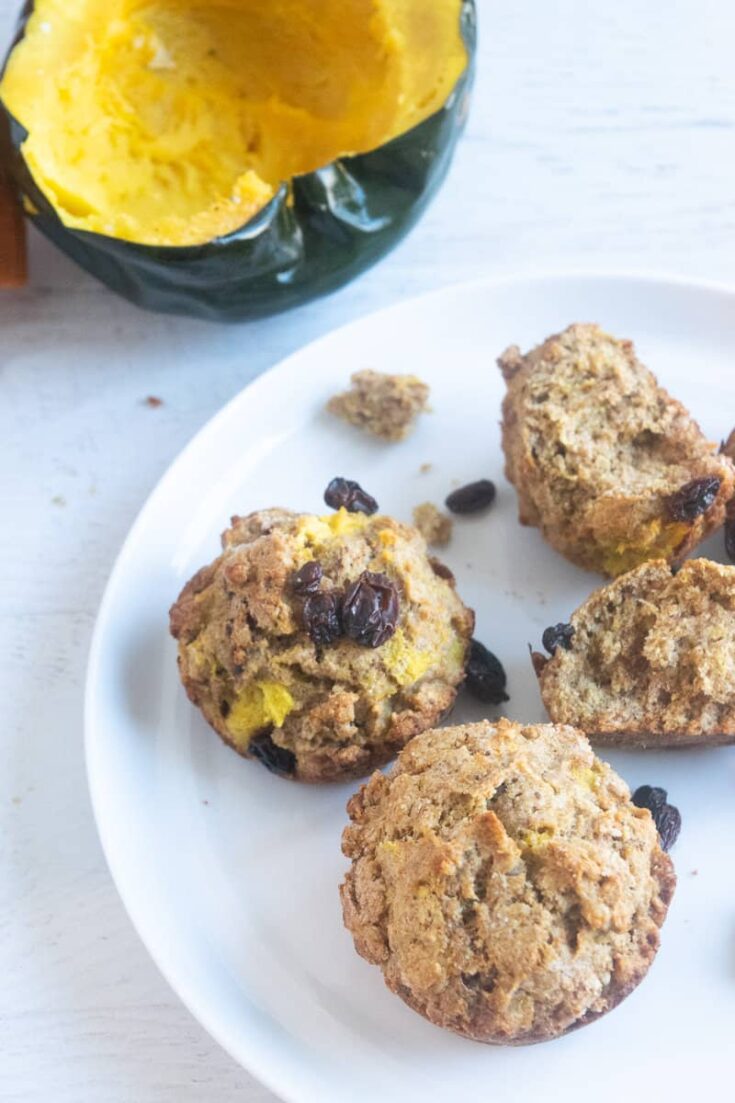
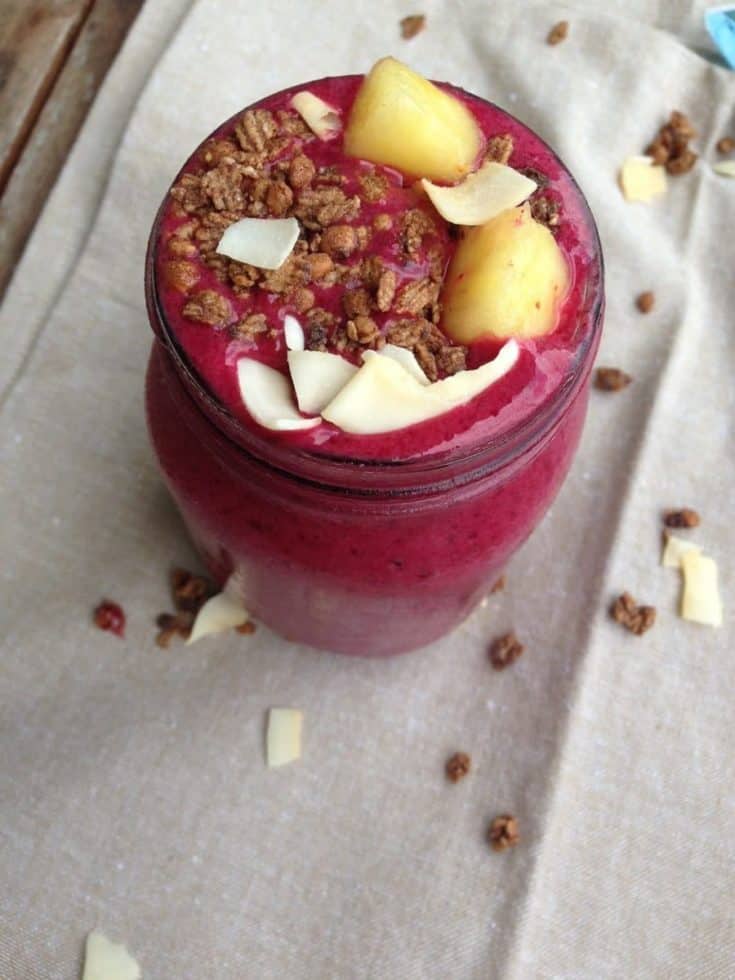
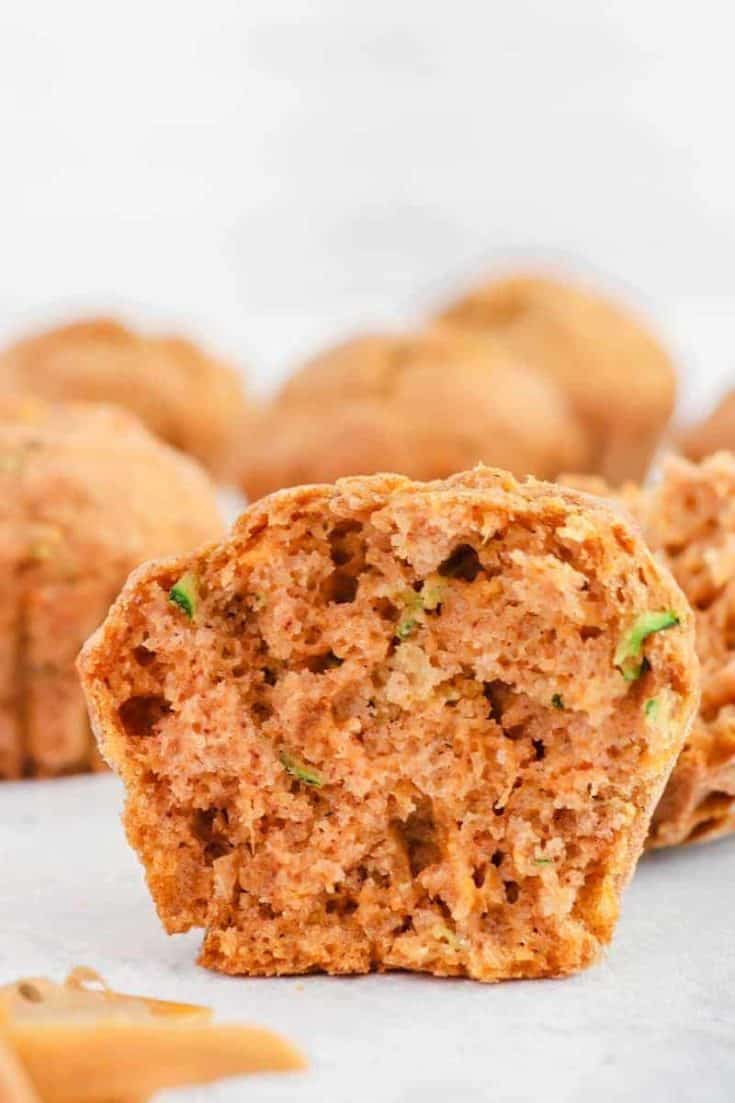

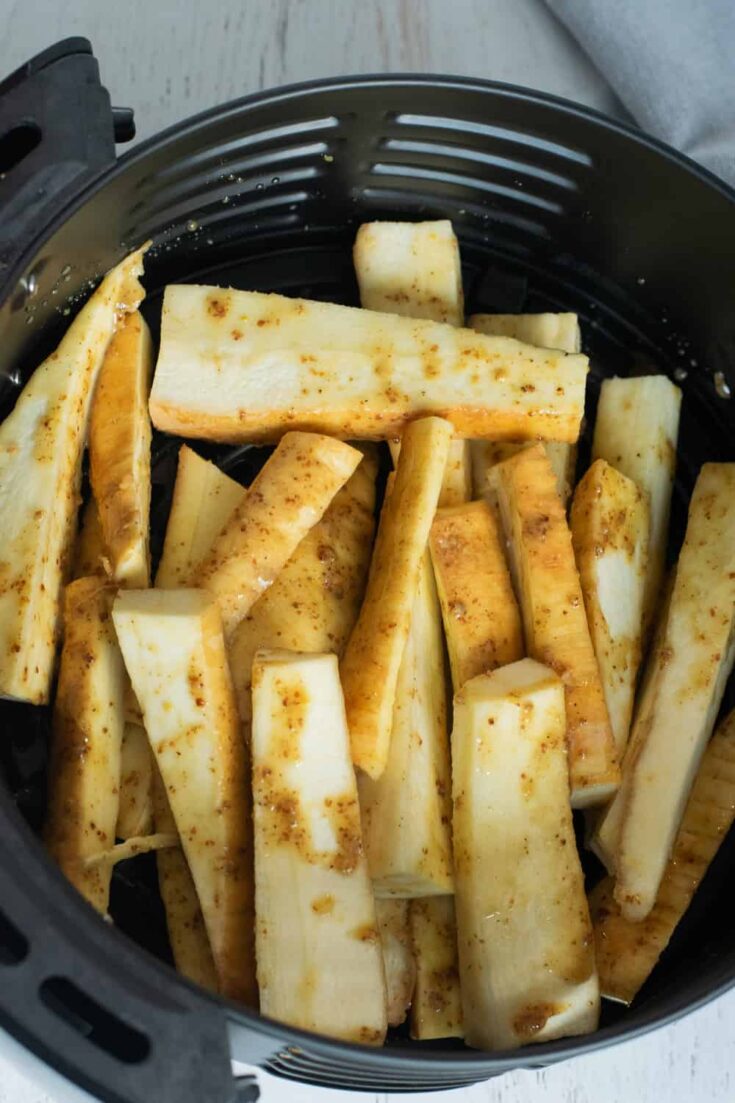
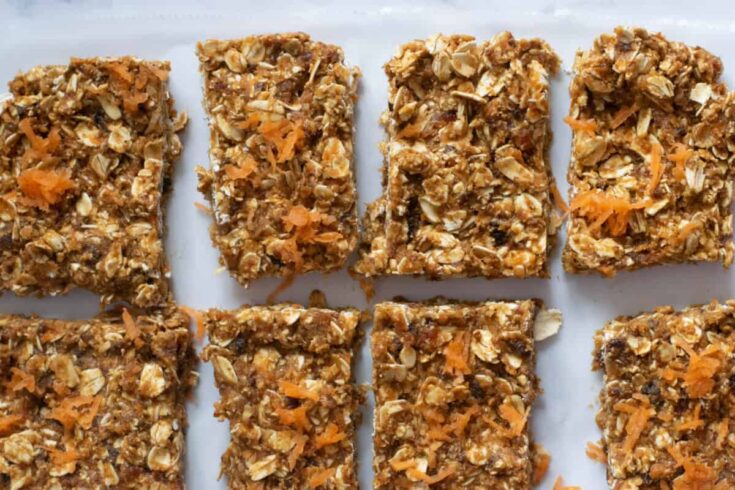

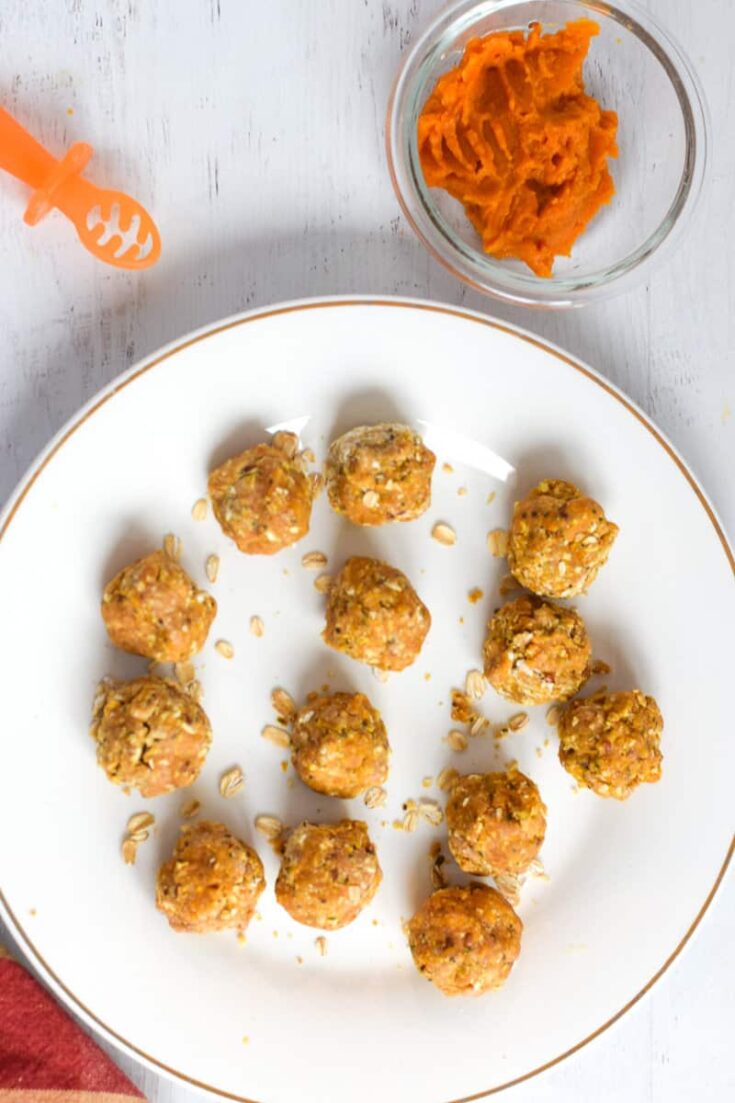
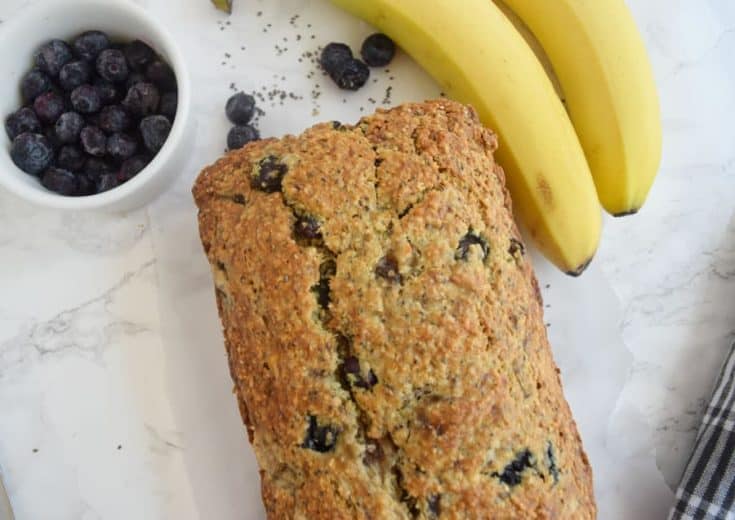
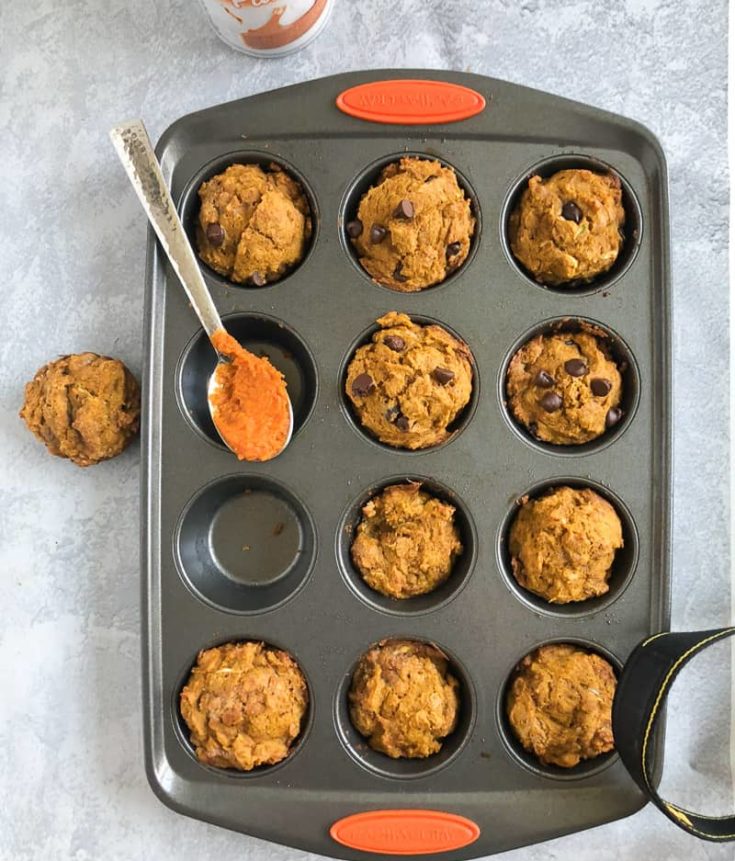
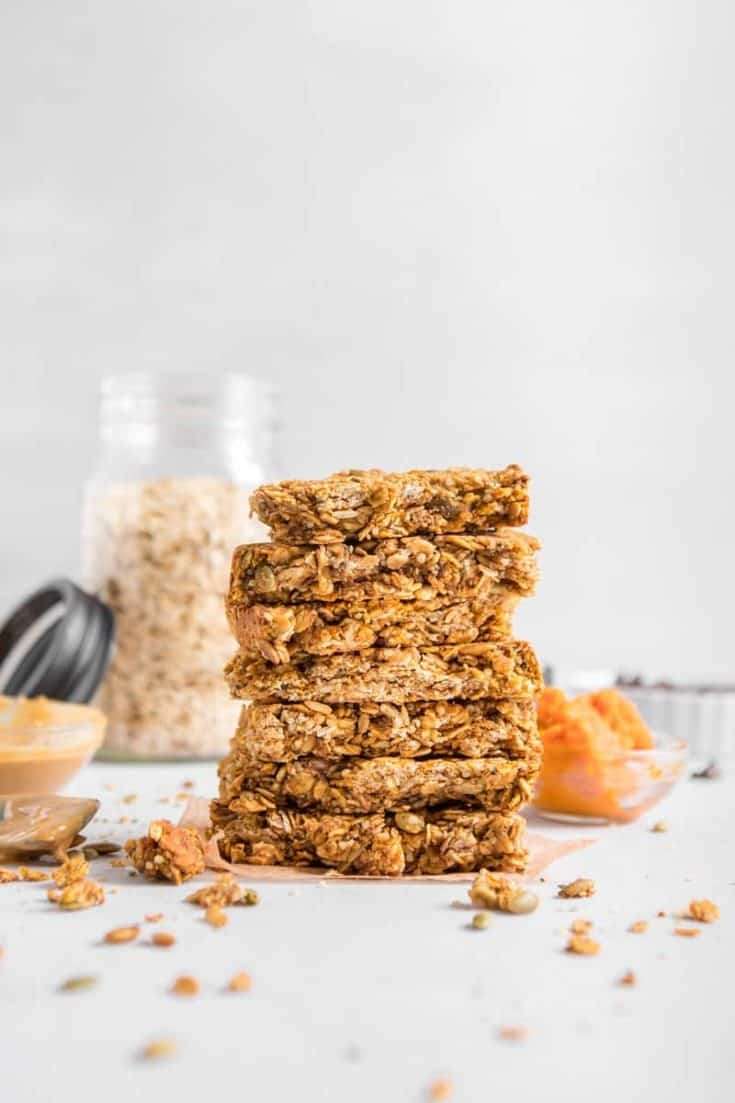
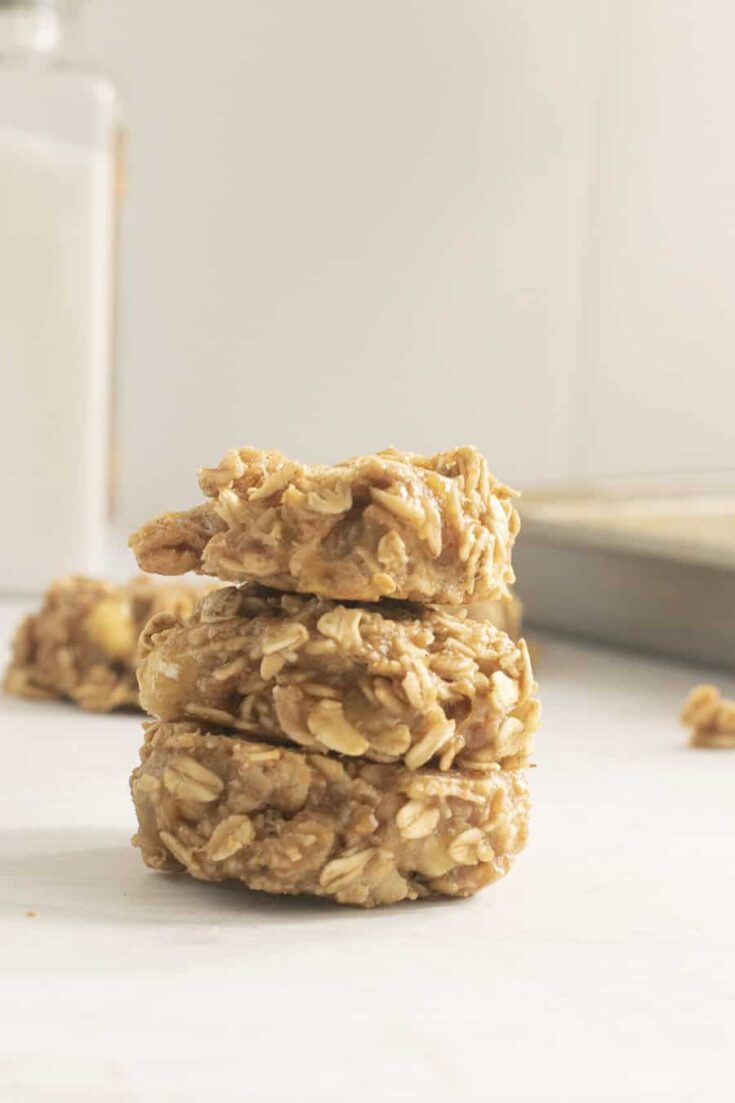
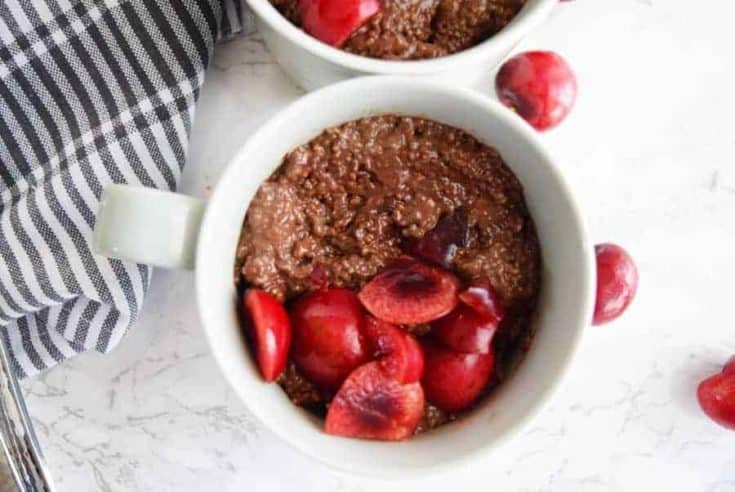

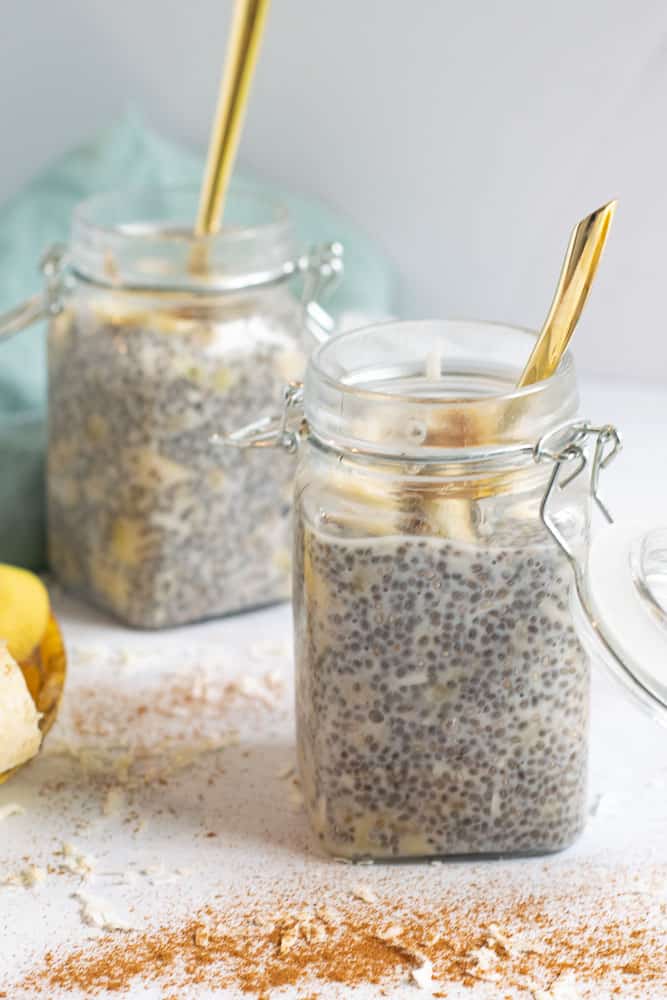
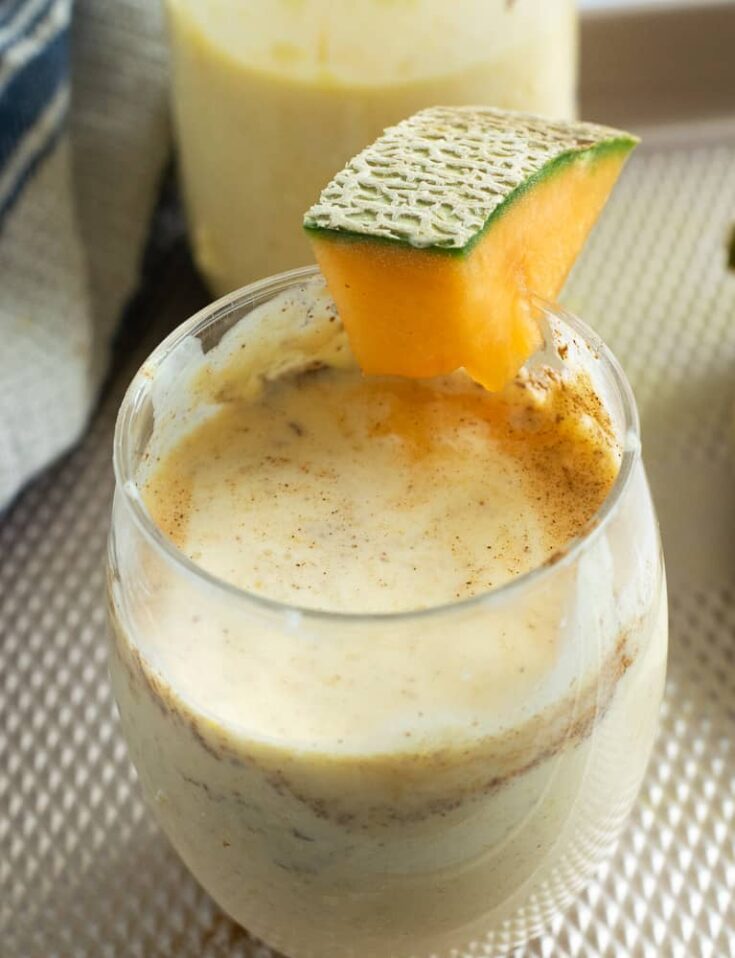
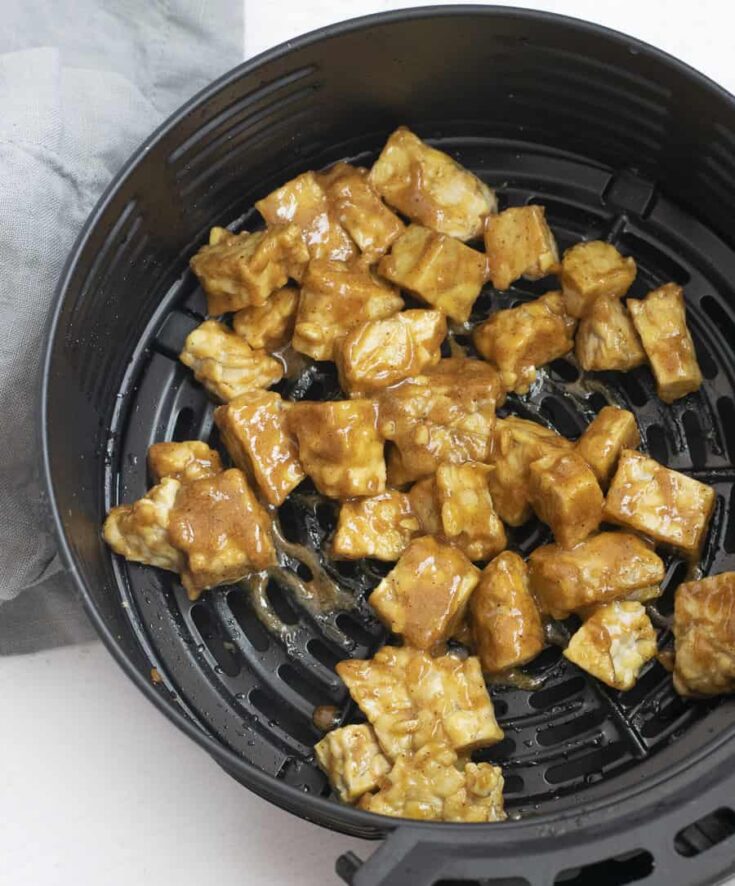
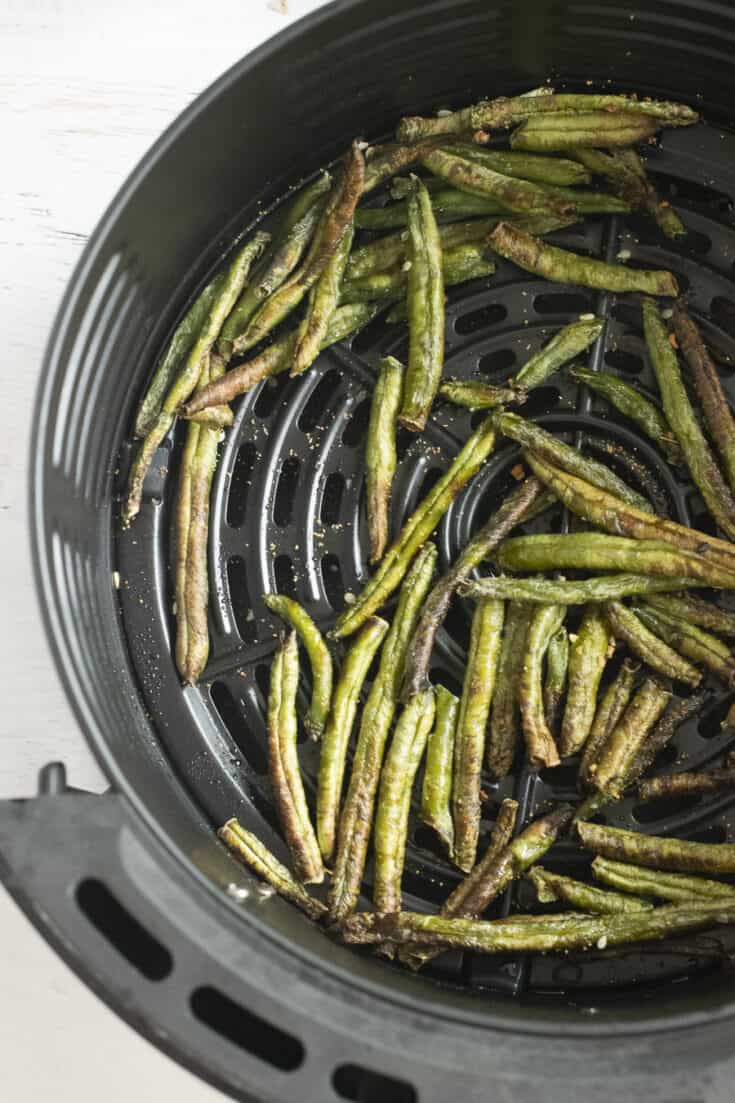
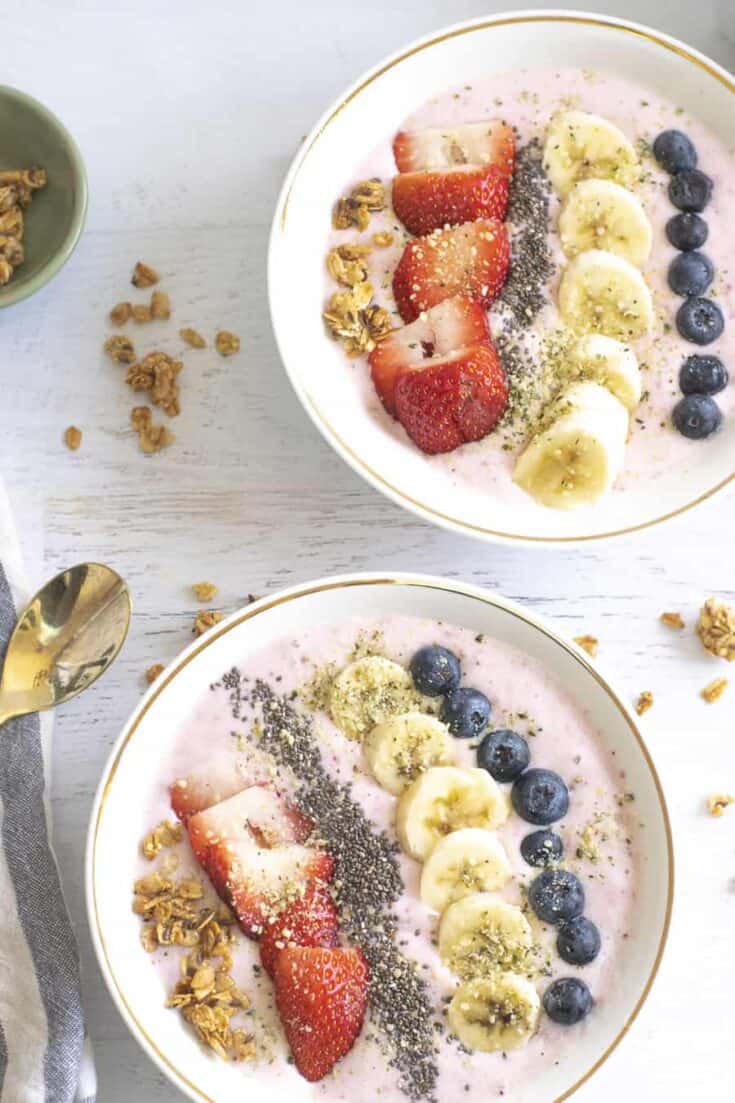
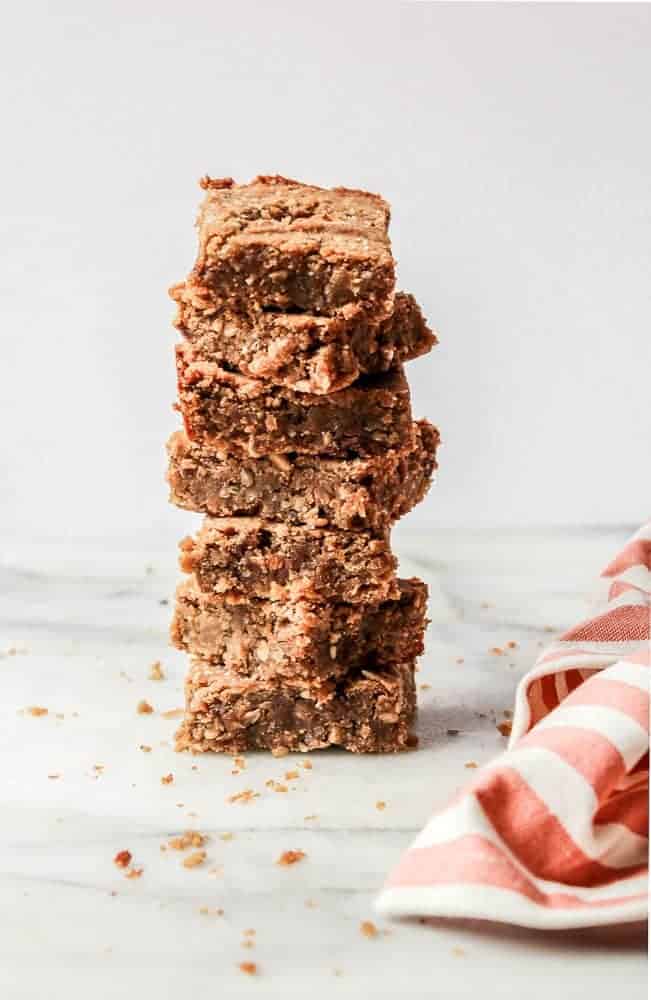

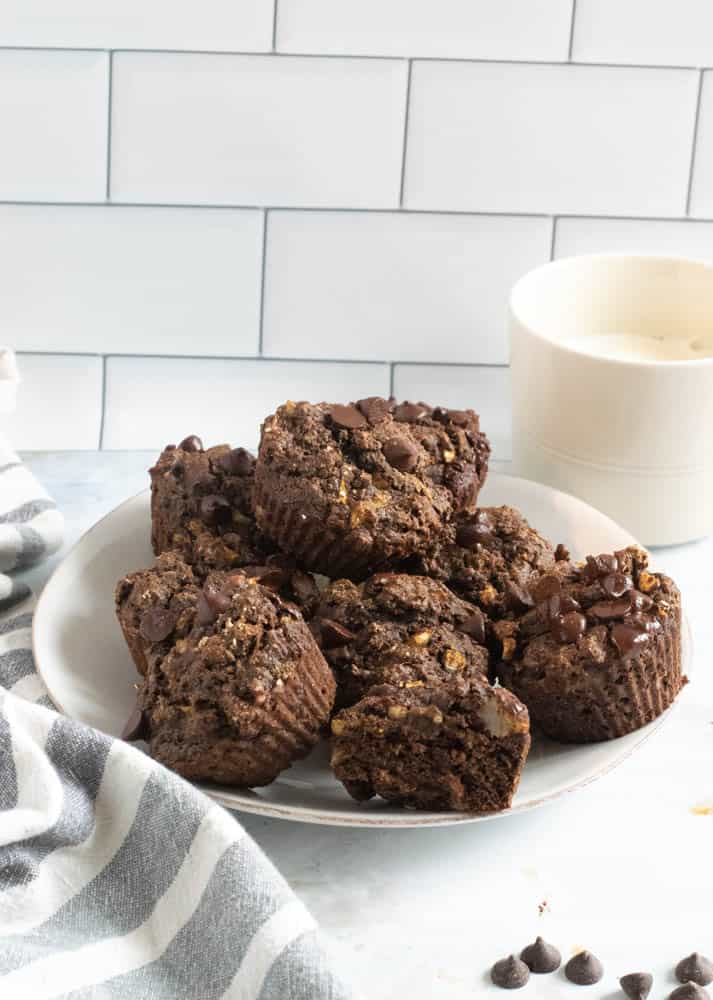
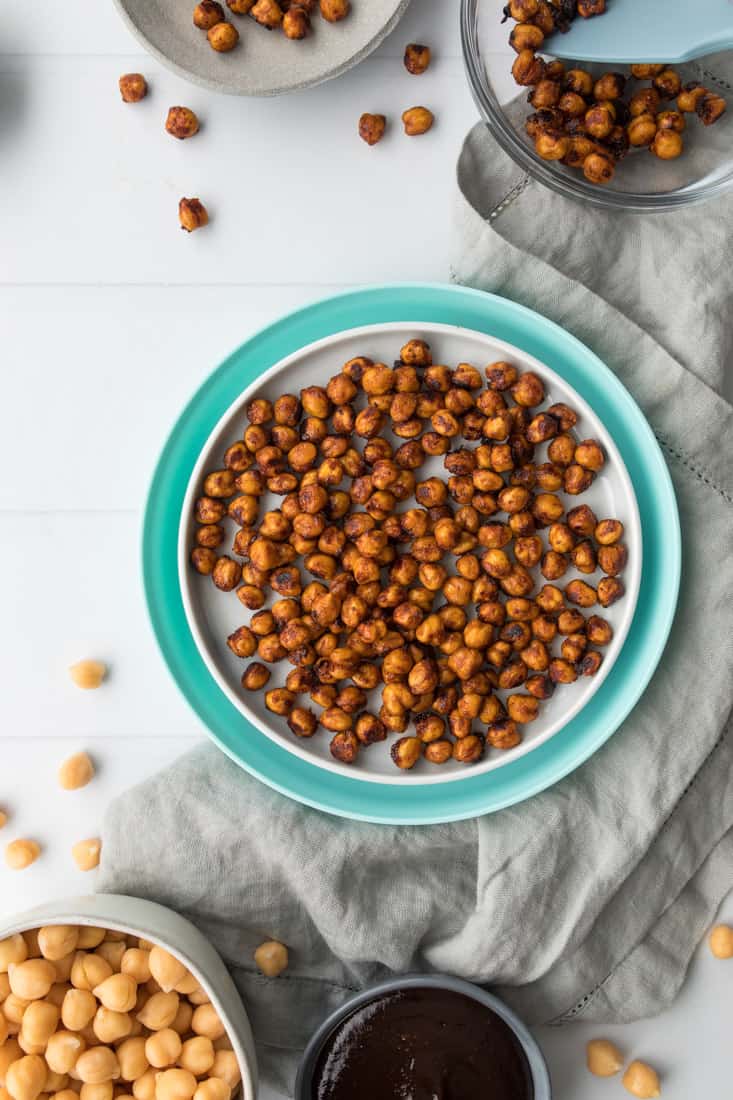
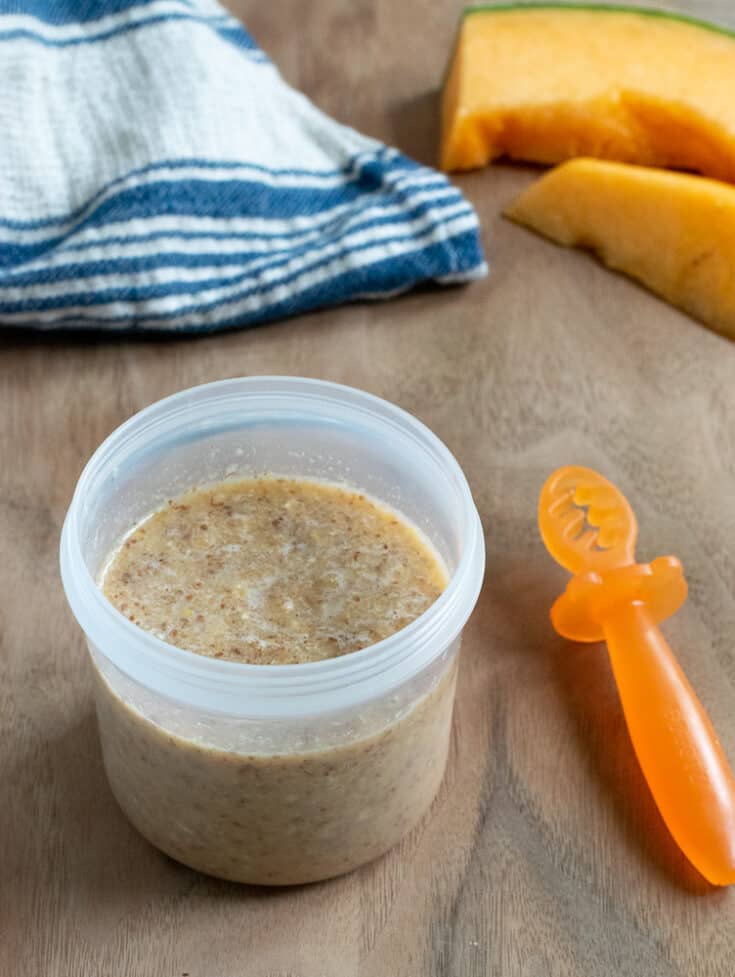


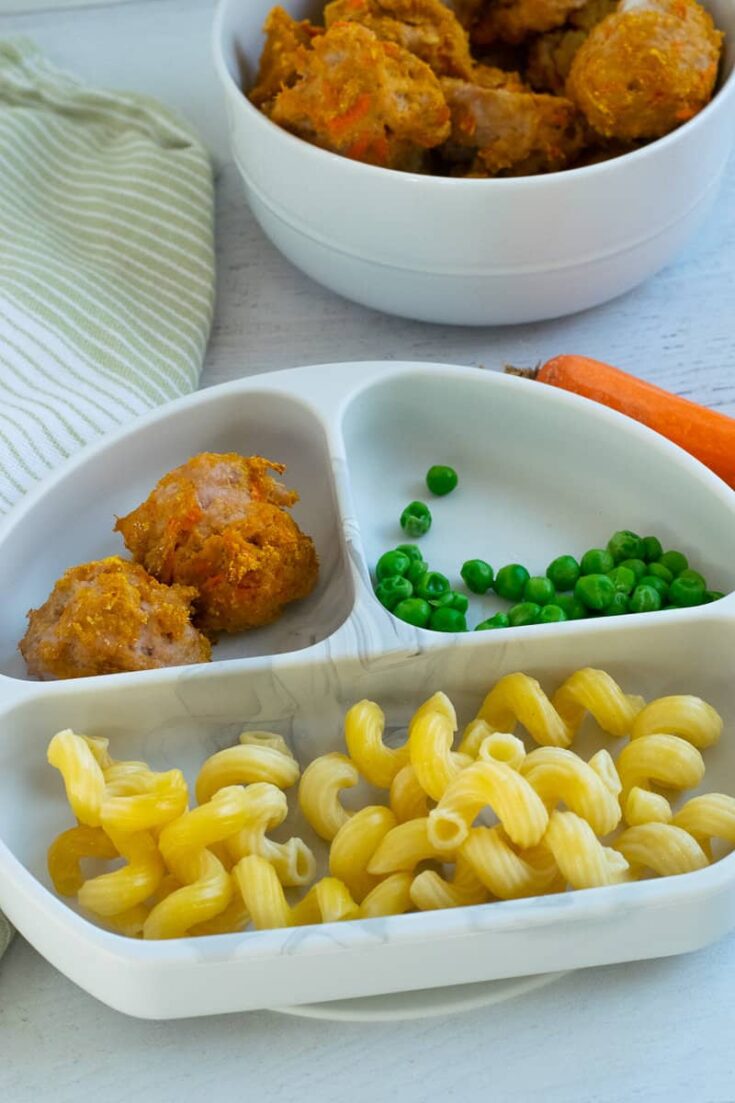



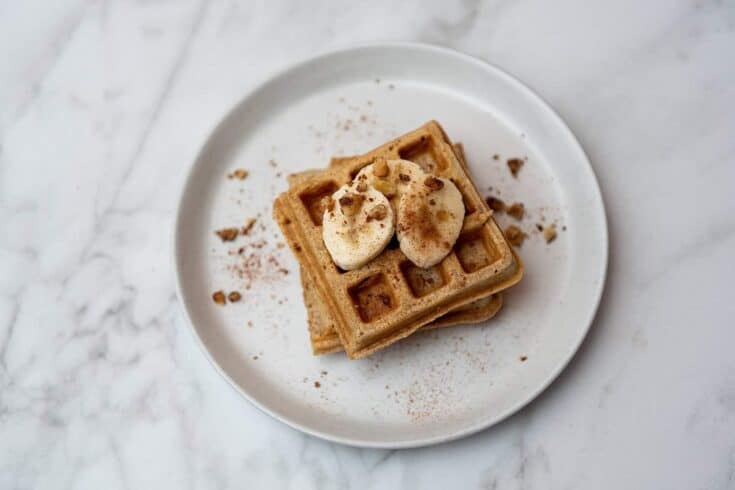




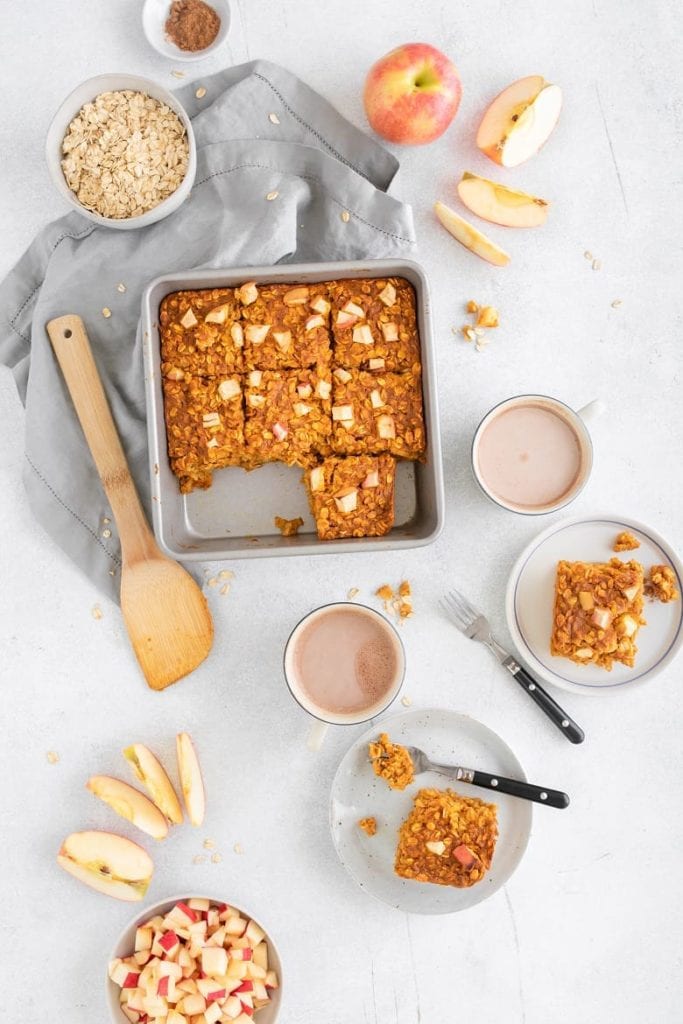


Like This Content?
Support Bucket List Tummy